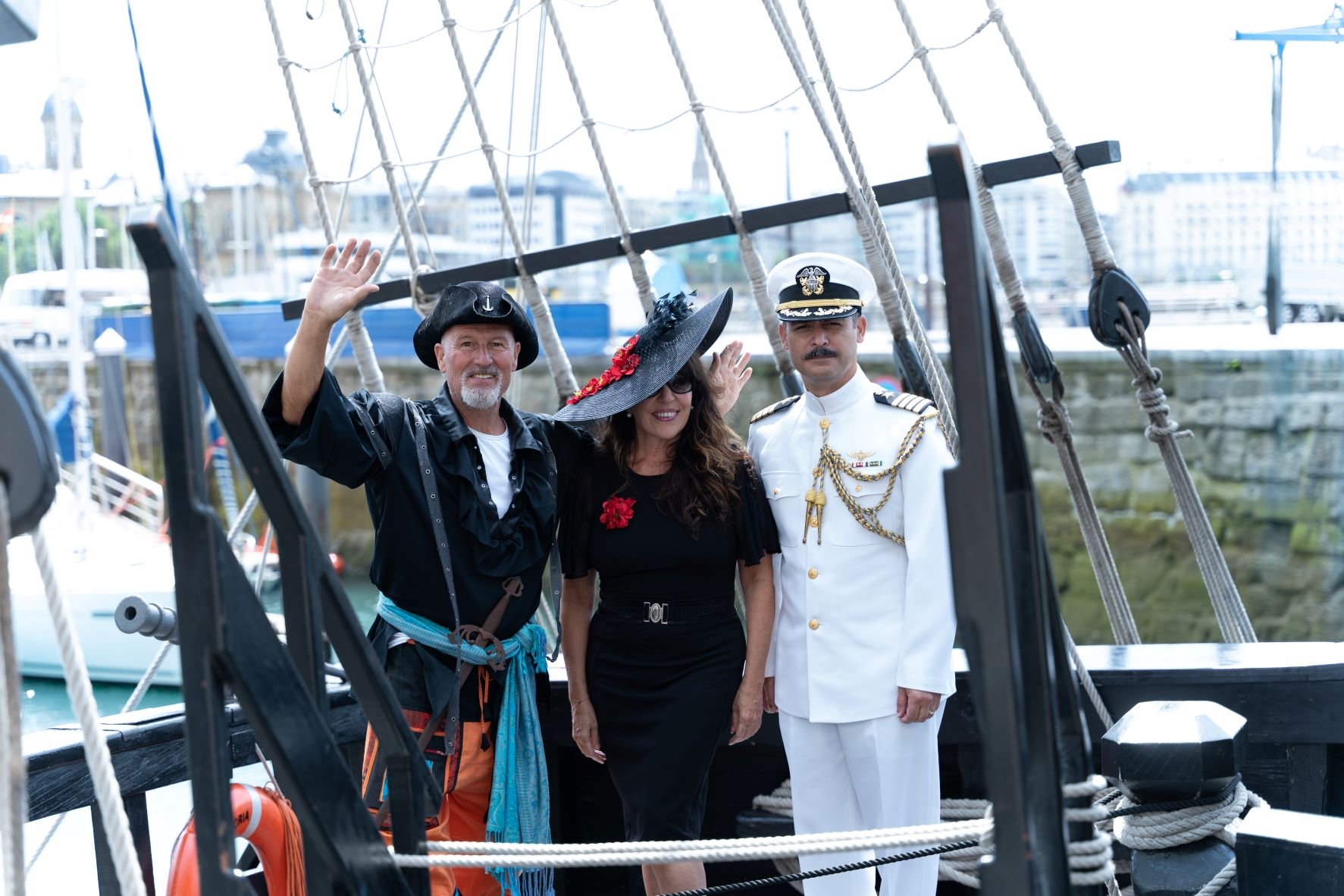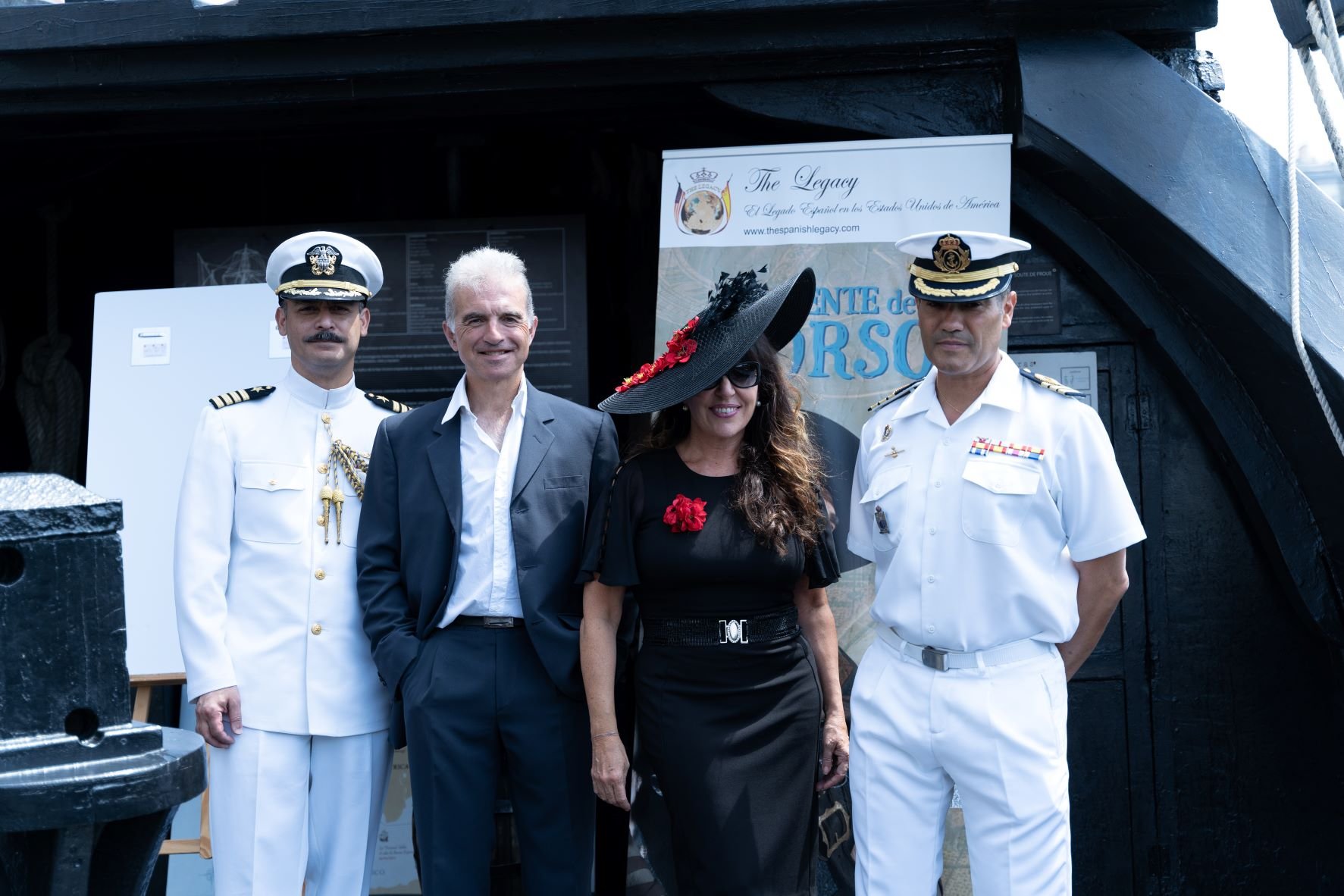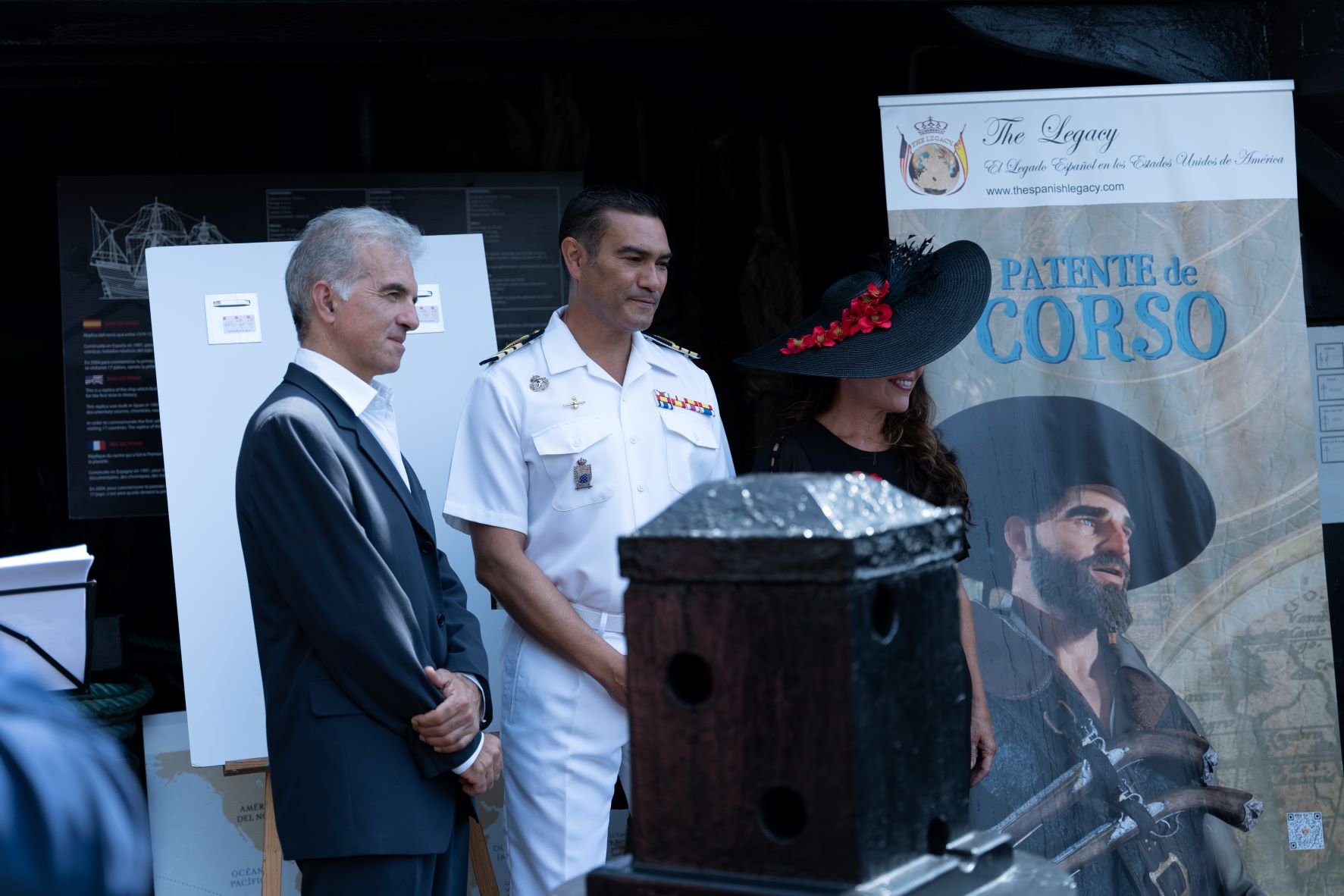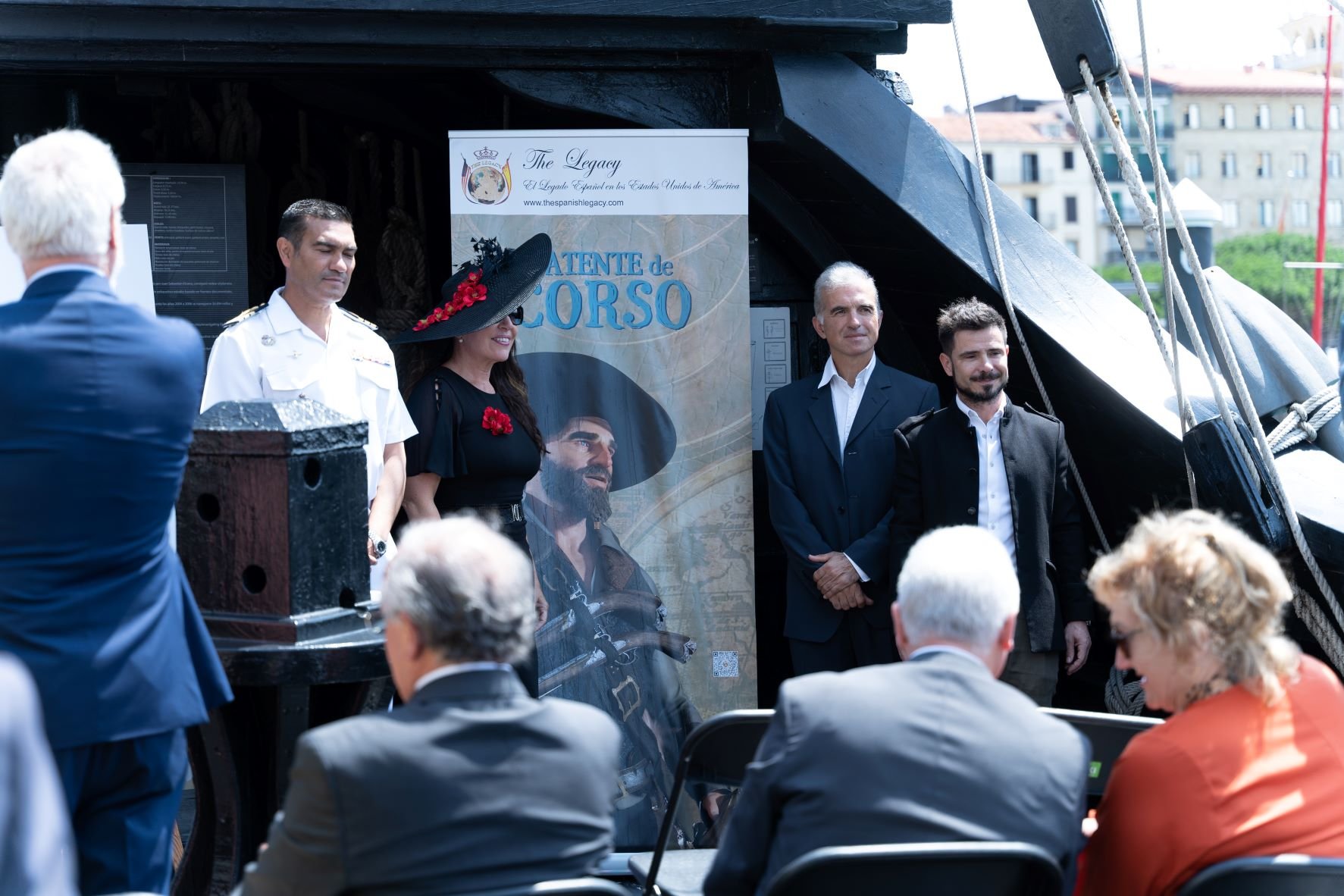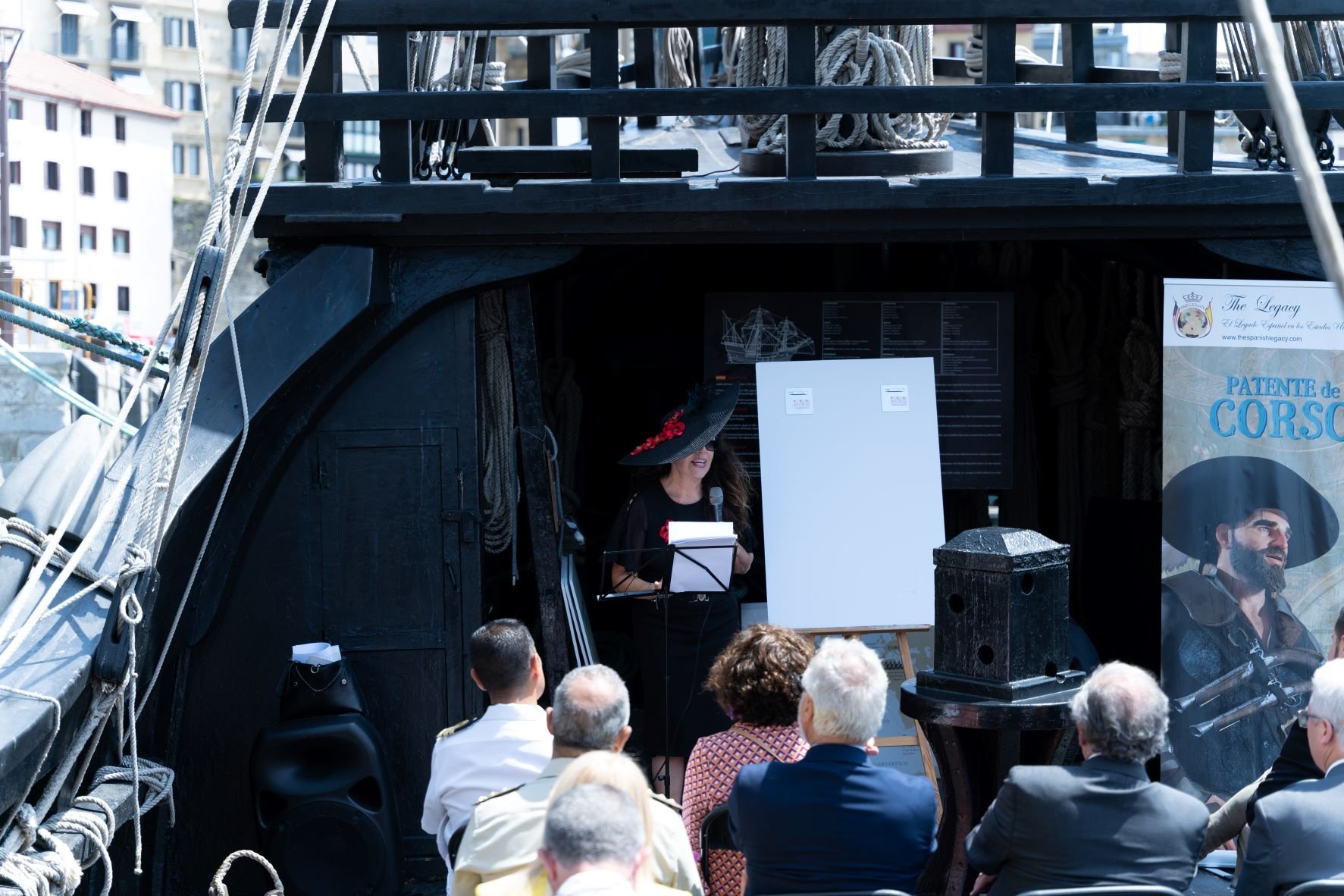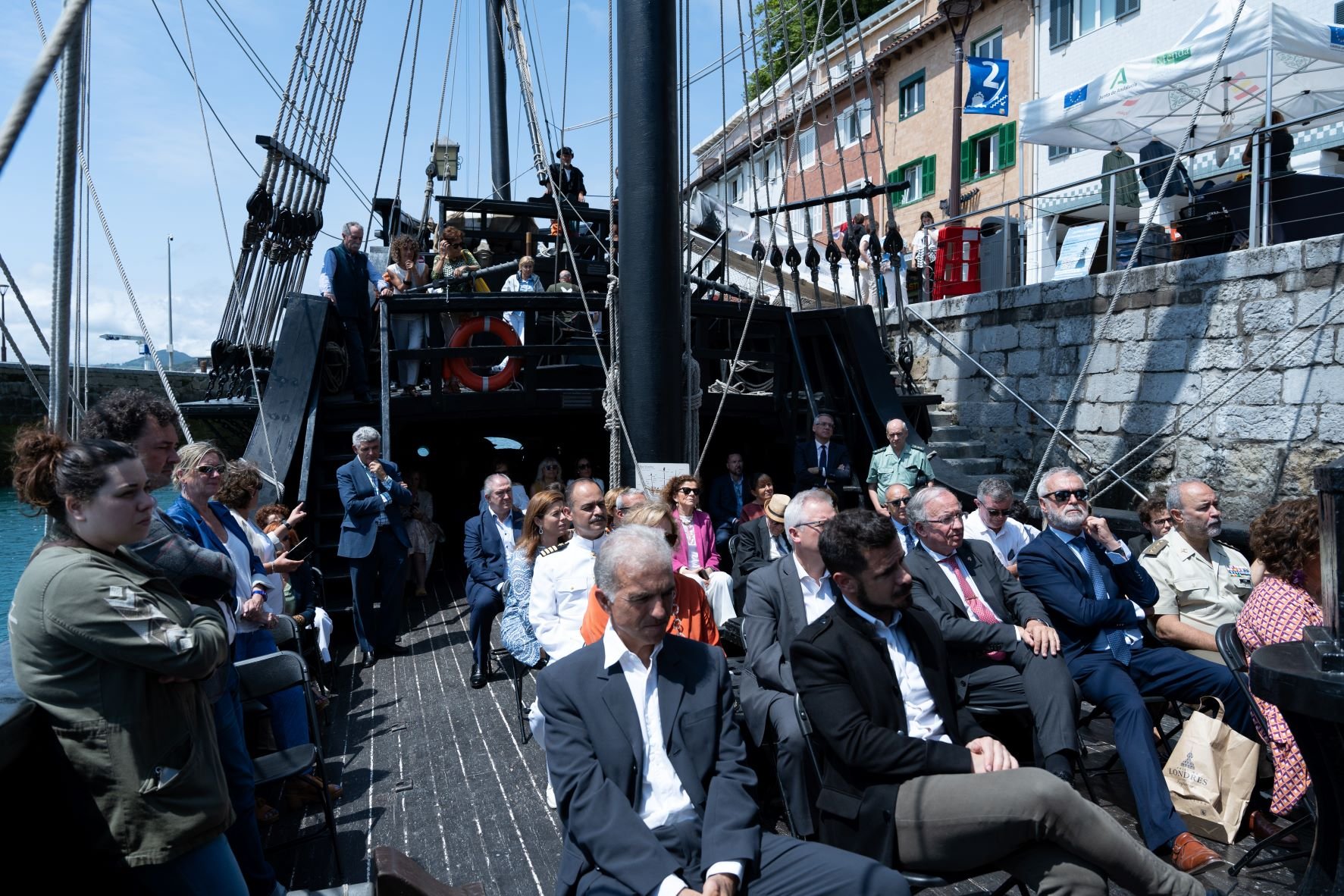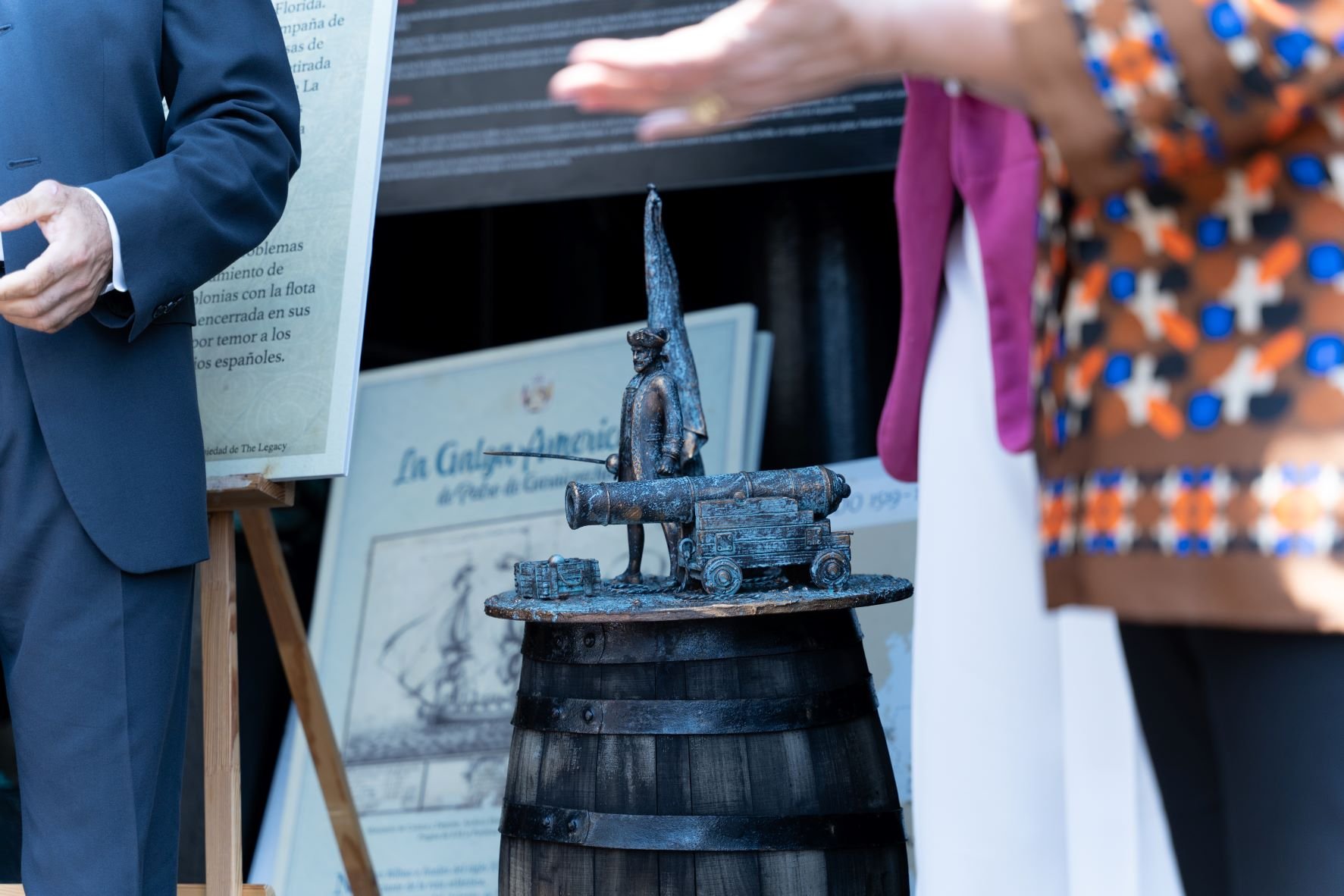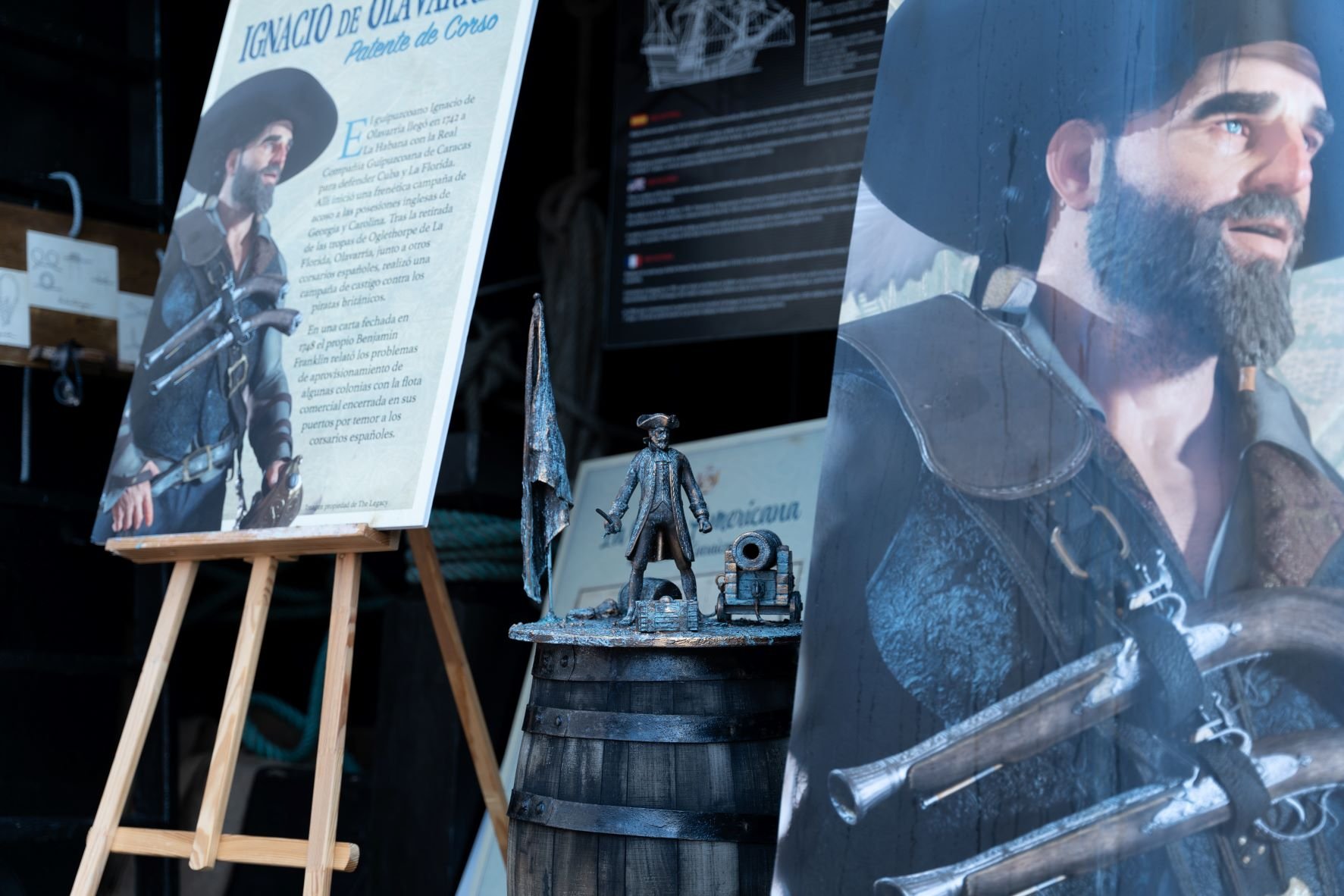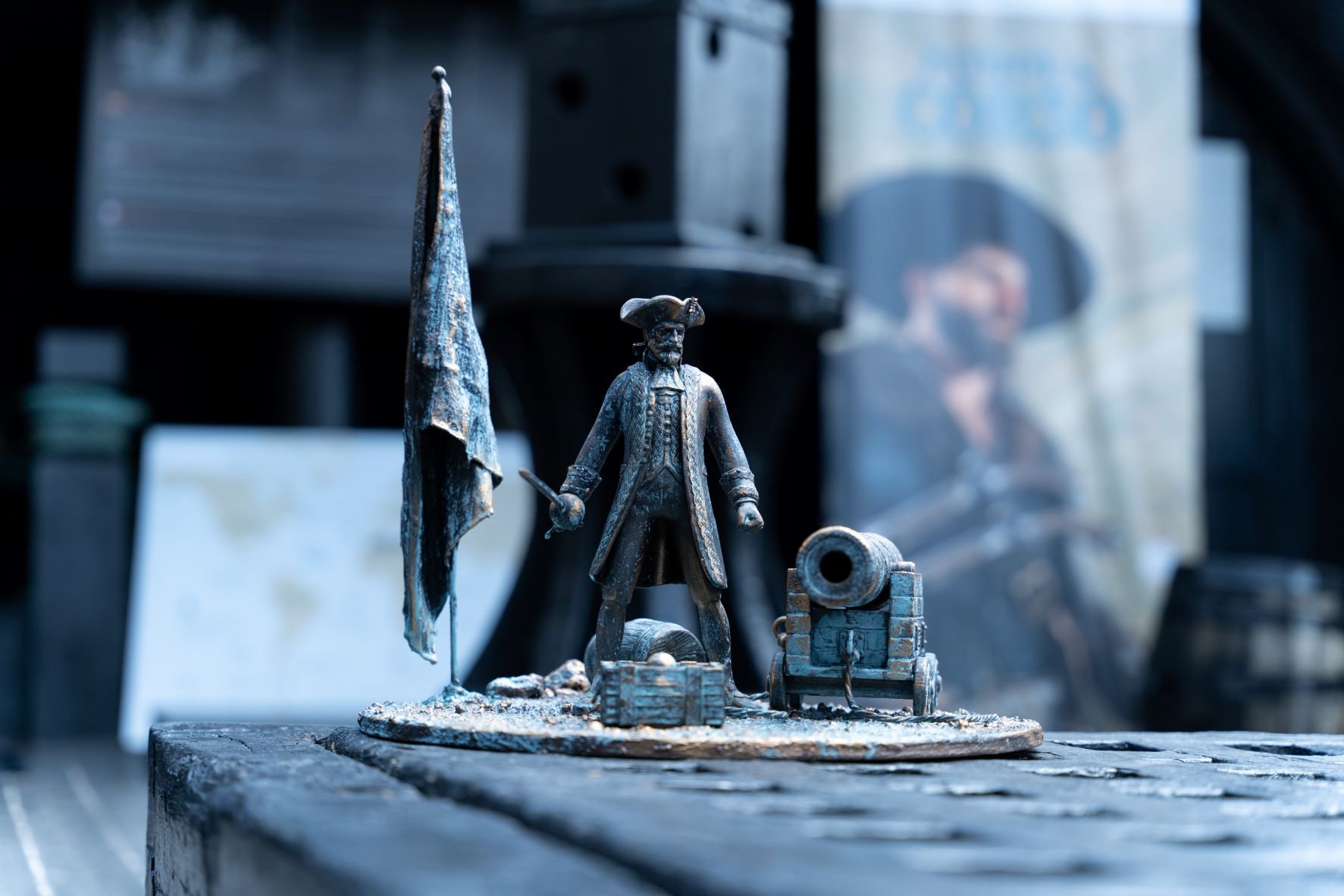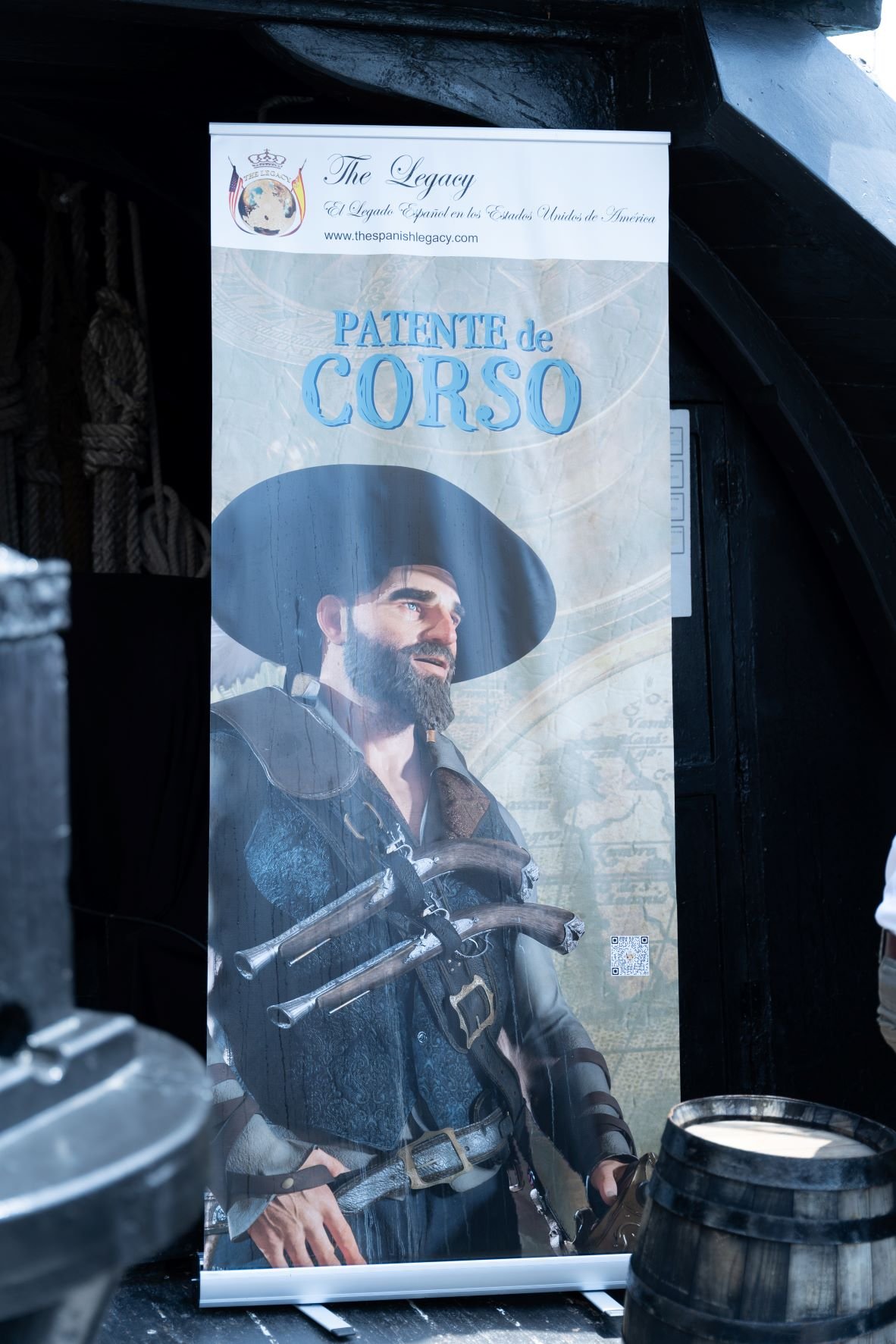Letter of Marque
Letter of Marque
The new project from The Legacy.
The aim of our new project is to revive the life and work of the Spanish privateers and to demystify a part of history which, lacking historical rigor, has been commonly promoted by the film industry to the point of being taken as fact by each and every one of us. In short, we seek a paradigm shift to cast a sliver of light on the real history of Spain.
While preparing The Legacy Exhibition in San Sebastian we had access to Raúl Moscoso González's doctoral thesis entitled "Guerra y comercio. Spanish privateers in the Greater Caribbean during the reign of Philip V (1700-1746)". His work led to the spotlighting of some of these forgotten figures from our history, starting with Ignacio de Olavarría from Guipuzcoa.
The opening story of our new project begins at the end of the 15th century when, with the signing of the Treaty of Tordesillas, drawn up under the auspices of Pope Alexander VI, the kingdoms of Spain and Portugal divided up half of the known world to the detriment of the other European powers, that is, France and England. Nevertheless, during the first years of the Spanish Atlantic expansion, the new territories did not seem to arouse the slightest interest in the rest of the European courts. After all, there didn't seem to be anything of value there.
The arrival to the Iberian Peninsula of the impressive treasure of Moctezuma seized by Hernán Cortés merely fueled disputes between the different European monarchs, who soon demanded that Charles I of Spain and V of Germany hand over their share of the so-called New World. In fact, Francis I of France went so far as to demand that Charles V show him “Adam's will” in which he left Spain more than half of the world. Faced with the Spanish authorities' refusal to allow any foreign subject to enter their territories, the European monarchs were quick to launch maritime attacks against Spanish possessions in America to break the Spanish commercial monopoly.
Privateers, pirates, buccaneers, and filibusters were how, for more than a century, some appropriated the wealth of others. Tired of always being the victims in their own lands, both authorities and neighbors decided to respond by arming their own vessels to attack the ships and possessions of their enemies, Great Britain, France, and Holland, as well as the independent pirates. Little by little, the seas and coasts of the Americas were filled with privateer vessels returning to their ports loaded with millions of pesos in gold and silver, as well as hundreds of British, French, and Dutch prisoners.
To regulate the high level of predatory activity that emerged from Spanish ports, on December 12, 1621, Philip IV issued the first "Ordinance governing private vessels navigating under privateering". It was a legal compendium regulating all aspects of privateering and its purpose was to legalize the capture of enemy ships, which could be traded in Spanish territories without any impediment so that these ships could finance the activity itself. This ordinance remained unchanged until February 22, 1674, when, to adapt the privateer activity of her subjects to the reality of the Americas, Queen Mariana of Austria, on behalf of her son Charles II, ordered the publication of a new specific regulation for the American continent that would remain in force until 1761, when Carlos III was already on the Spanish throne.
Starting at the end of the 17th century, the list of Spanish privateers gradually increased, drawing from all levels of society, from young sailors eager for adventure to illustrious members of society in the Americas who saw privateering and its preeminence as a good means of social advancement. As a result, between 1739 and 1742, the first years of the War of Jenkins' Ear, more than 50 privateering licenses were granted, which allowed Spanish privateers to capture a total of 447 British vessels worth approximately 31 million pounds. Some of these men were:
- The Bilbao-born Pedro de Garaycoechea, who while in command of a small squadron composed of two packet boats and a frigate managed to capture multiple British ships, among them eleven sloops, six frigates, four packet boats, four brigantines and a schooner. As a result of his privateer activity, he accumulated more than 3,250,000 pesos, a fortune at the time.
- Luis Francisco Silveiro, a resident of Trinidad, who privateered between 1742 and 1745 and who with his sloops of war "Inocente" and "San Juan Nepomuceno" captured several British ships, among them five sloops of war, two frigates and a brigantine.
- The Puerto Rican Miguel Enriquez was perhaps one of the most feared and respected Spanish privateers in the Americas. Born of the union between a slave and a member of the Puerto Rican elite, Miguel Enriquez was a "dark-skinned, appearing black" mixed-race individual who saw privateering and service to the King as an excellent method for upward social mobility. His fleet, composed of more than 12 vessels, captured a staggering 65 ships, making him the wealthiest man in Puerto Rico. For his services to the Kingdom, Philip V granted him the medal of the Royal Effigy, which allowed him to be one of the first mixed-race Americans to achieve the honor of Knight of Spain.
- Between 1719 and 1735, the Dominican José Campuzano Polanco captured more than 55 vessels, 35 of which were British. His fame spread from the Caribbean to the North Atlantic and led him to join the Spanish Armada where he served under the command of the now famous Lieutenant General Blas de Lezo in the never sufficiently lauded Battle of Cartagena de Indias in 1741.
- Other privateers such as the aforementioned Ignacio de Olavarría, Domingo Coimbra, Andrés González, Juan Bustillos, Juan Ramón Gutiérrez or Miguel de Manzona attacked British ships until reaching the coasts of New York or Rhode Island, in today’s United States of America. This is evidenced by a letter in which Benjamin Franklin requests the aid of the British authorities on account of the presence of two Cuban privateers off Cape Hatteras. (Previously known as Cabo Medanoso in Spanish)
Patriots, sea bandits, and locals who, tired of being attacked, decided to arm and defend themselves, opportunists willing to do anything for upward social mobility and, of course, romantic adventurers; these are just some of the definitions that come to mind when we talk about privateers.
The main Spanish shipowners were active in the Bay of Biscay, the Caribbean and the Mediterranean, fighting against the British, French, Dutch, Berbers and Turks. They were exceptional men who knew how to transform their sorrows into virtues and, with this, were able to magnify and defend their land, even if it meant taking up arms.
We began this project in the Basque Country with the presentation of the Patente de Corso project aboard the Nao Victoria, starting with the Basque Privateers and with the brave Ignacio de Olavarría as our main flag. But there is more. Our intention is to recover the memory of all Spanish privateers regardless of their place of birth, whether they were Galicians, Andalusians or Catalans.
We need fair winds and following seas, and your help to spread the word.
Sources:
- Moscoso González, Raúl (2022). Guerra y comercio. Los corsarios españoles en el Gran Caribe durante el reinado de Felipe V (1714-1746). [War and Commerce. Spanish privateers in the Greater Caribbean during the reign of Philip V (1714-1746)] Unpublished thesis directed by Meritxell Tous Mata and Javier Laviña Gómez. University of Barcelona. Barcelona.
- Ferrer Gispets, David and Moscoso González Raúl (2019). Por el beneficio y el Real Servicio. El corso hispano en la estrategia mediterránea de Felipe V (1714-1746). [For Profit and the Royal Service. Hispanic privateering in the Mediterranean strategy of Philip V (1714-1746)} Drassana; Revista del Museu Marítim. No. 71, Pg. 42-54. Barcelona.
- Otero Lana, Enrique. (2006). Los corsarios vascos en la edad moderna. [Basque privateers in the modern age.] Itsas; Revista de estudios marítimos del País Vasco. No. 5, Pg. 193-227. San Sebastián.
- Rodríguez González, Agustín.R.(2020). Corsarios españoles. [Spanish Privateers] EDAF, Madrid.
· Ortega Josefina. finoriz@hotmail.com, “Corsarios cubanos” , www.archivocubano.org
- https://www.elmundo.es/cultura/2020/10/26/5f9538f4fc6c83fb768b456f.html
- https://abcblogs.abc.es/espejo-de-navegantes/otros-temas/corsarios-espanoles.html
Our most sincere thanks to Mr. Raúl Moscoso González for his generous contribution to our project and for his excellent doctoral thesis, a driving force and inspiration for this new project.
The Legacy presenta su nuevo proyecto Patente de Corso a bordo de la Nao Victoria
6 DE JULIO DE 2022
La nao Victoria, réplica de la embarcación del guipuzcoano Juan Sebastián Elkano, con la que dio la primera vuelta al mundo, se encuentra abierta al público en el puerto de Donostia hasta el 10 de julio. La asociación The Legacy, junto con el Ministerio de Defensa, inauguró ayer la exposición El legado vasco en los Estados Unidos de América y su nuevo proyecto Patente de Corso, que cuenta con cuatro nuevas postales que se añadieron a la exposición en la Iglesia de San Pedro Apóstol del Paseo de Muelle 2 en Donostia.
Los corsarios vascos salen de su sombra
5 DE JULIO DE 2022
La nueva muestra de postales de The Legacy recoge los hitos más desconocidos de los bucaneros que navegaron hacia el Nuevo Mundo durante el siglo XVIII.
La humillante muerte de los infames corsarios ingleses Drake y Hawkins
8 DE ENERO DE 2022
Los infames corsarios ingleses Francis Drake y John Hawkins bajo órdenes de Isabel I de Inglaterra, son derrotados y humillados por un contingente español muy inferior.



